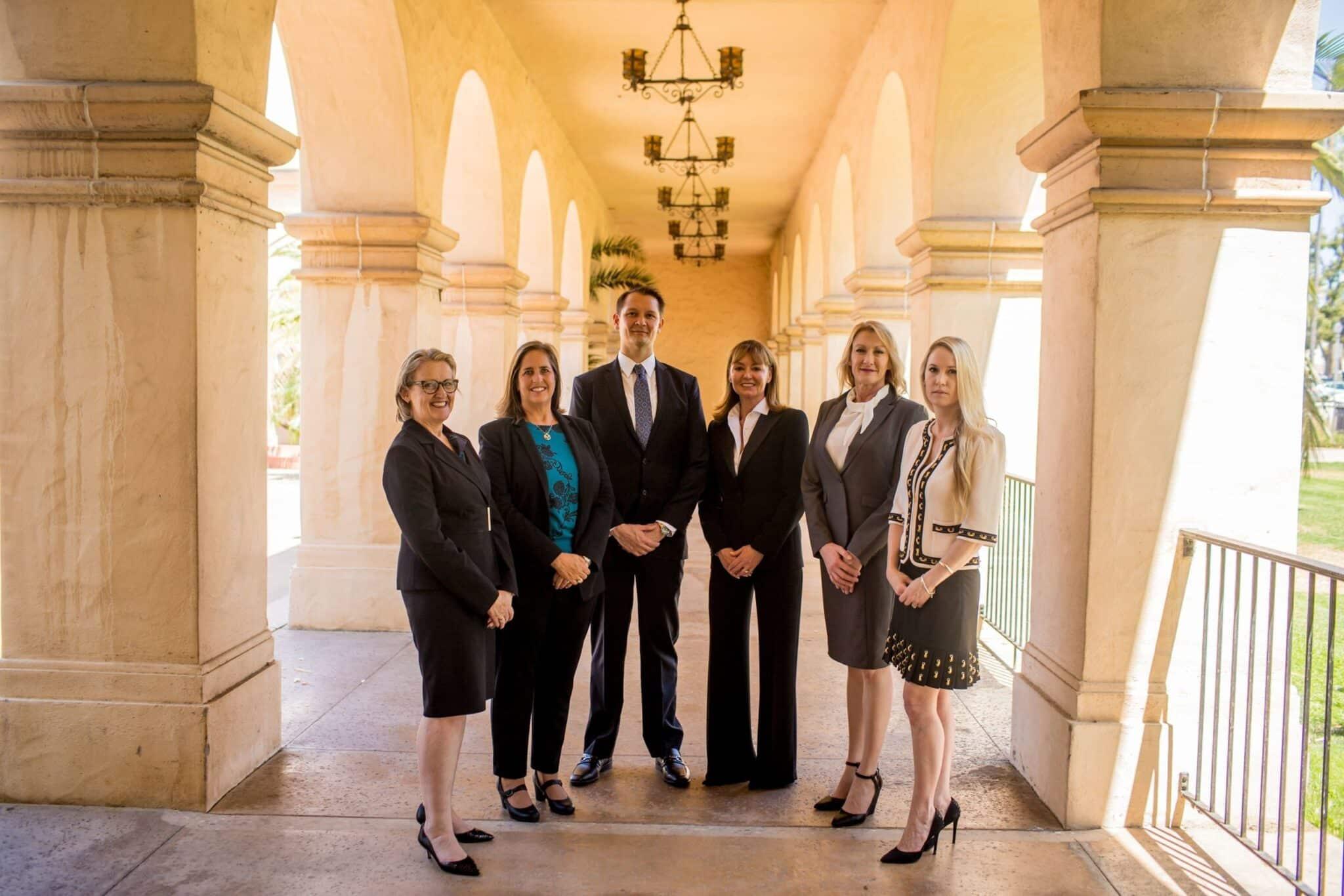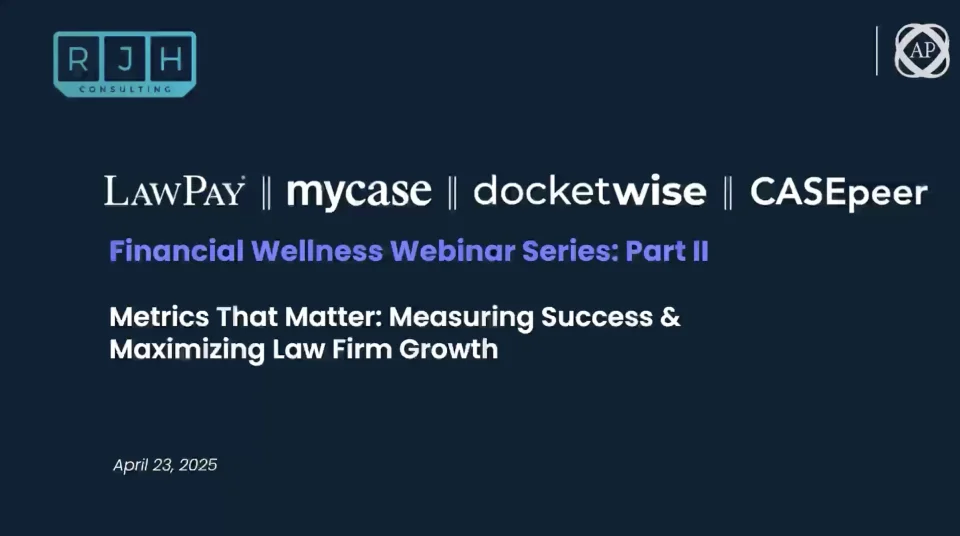Key takeaways
AI tools like legal CRMs, intake chatbots, and calendaring systems help streamline intake by qualifying leads, collecting data, and automating next steps.
Effective intake workflows often start with dynamic forms and feed directly into case management systems.
Lawyers can embed client intake forms with conditional logic on their websites and regularly track performance metrics to guide improvements.
Automated legal intake is changing the way lawyers connect with prospective clients by making it easier to capture, qualify, and follow up with new leads.
Instead of juggling paper forms or playing phone tag, your firm can now use AI-powered tools to respond instantly, gather critical case details, and schedule consultations in real time.
According to the 2024 Legal Industry Report, 8am™ MyCase customers who used embedded customized intake forms captured 58,395 leads and converted 10,286 of them into clients. These numbers highlight that online client intake systems move relationships forward from the first click.
In this article, we’ll explore how AI is enhancing every stage of legal intake, best practices, and practical ways to design responsive, secure, and easy-to-manage workflows.
What does an AI-enabled legal intake process look like?
An AI legal intake process uses intelligent tools to guide a prospective client from initial contact to consultation scheduling. It automatically collects information, filters out unqualified leads, and syncs with other systems to reduce manual steps.
Here’s an example of what an AI legal intake process might look like:
A prospective client engages with an AI-powered chatbot or virtual receptionist on the firm’s website or via text.
The chatbot asks qualifying questions and captures relevant details, like case type, timeline, and location.
AI evaluates the responses to determine fit and urgency, then assigns a lead score.
If qualified, the system offers available appointment times and syncs with the firm’s calendar.
AI automatically sends all client information to the firm’s legal CRM or case management software.
The client receives automated follow-up via email or SMS to confirm next steps.
This process creates a more responsive client experience while helping your firm assess lead quality and conversion potential. As it continues to evolve, future trends in AI legal intake point to even deeper integrations with voice tools, sentiment analysis, and multilingual support to meet rising client expectations.
As firms evaluate these tools, it's important to understand how AI-powered intake goes beyond surface-level automation. AI in law is particularly well-suited to tasks like real-time messaging, data extraction, lead scoring, and follow-up coordination.
And unlike basic automation, AI can help you with more high-value tasks like interpreting responses, adapting to context, and making predictive decisions about next steps.
What solutions help automate the legal intake process?
Legal AI tools like digital intake forms, legal calendaring tools, CRM systems, and AI-powered chatbots help automate the legal intake process by reducing manual data entry, speeding up response times, and enabling smoother handoffs between steps.
In the next few sections, we’ll explore how these solutions function and where AI adds meaningful value.
Digital intake forms
Digital intake forms make it easier for potential clients to share case details before a consultation. Your firms can embed client intake forms on their websites to capture contact information, case types, and other essentials. The structured, secure format reduces back-and-forth and ensures the firm collects and stores consistent intake data.
Digital forms can also help reduce manual work. For example, some systems automatically trigger next steps, like sending confirmation emails or assigning tasks in your practice management software.
Tools like MyCase client intake offer these built-in automations, which can help your firm respond quickly to clients and reduce errors. You can also have an AI intake assistant help users through the full process and answer questions without hiring additional staff.
Case Study
Murphy Jones Law Increases Retention Rate and Client Base With MyCase and LawPay
Read Now
Calendaring
Legal calendaring tools automate consultation scheduling and follow-ups so prospective clients can book time directly through your website or intake form. With this type of legal automation, your firm can offer real-time access to open slots, synced with attorneys’ calendars.
AI-enhanced calendaring takes automation a step further. Some systems use AI to recommend optimal meeting times based on past booking patterns, time zones, or urgency levels. Others detect potential scheduling conflicts and offer suggestions for real-time resolution.
Integrated calendaring software, like MyCase legal calendaring, can also trigger automated reminders, send follow-up messages, and coordinate availability across multiple team members. Combining intelligent scheduling with intake forms and CRM tools can help create a seamless intake experience from first contact to consultation.
Legal CRM
A legal CRM helps firms manage incoming leads and follow-up so no prospective client slips through the cracks. As part of the intake process, CRMs organize contact details, log interactions, and assign leads to specific team members for timely engagement.
MyCase legal CRM offers these capabilities, making it easier to turn inquiries into retained clients with less administrative overhead. It helps enhance lead management for lawyers by helping your firm automate lead workflows and convert lead data into case information.
For instance, if a client completes an intake form but doesn’t book a consultation, the CRM can automatically send a personalized follow-up email or notify staff to reach out. AI can also suggest the most appropriate practice area or attorney based on intake responses.
AI chatbots and receptionists
AI legal intake chatbots and virtual receptionists operate 24/7, acting as the first point of contact for prospective clients. They can answer questions, collect intake details, and guide visitors toward next steps.
Plus, the legal AI chatbots use natural language processing (NLP) to understand context, identify case types, and adapt follow-up questions in real time. You can embed them directly into the firm’s website or link them through SMS and messaging platforms.
For example, if a potential client mentions an auto accident, the AI legal intake virtual assistant might automatically flag the inquiry as personal injury-related and respond with a tailored set of intake questions. Some even sync directly with the firm’s calendar or CRM, initiating appointments or data entry.
When integrated with other tools like intake forms or calendaring systems, AI legal intake chatbots can create a fully automated intake experience while maintaining a professional and human-like tone.
What are the top legal AI tools for automated client intake?
The top legal AI tools for automated client intake can combine intelligent communication, data capture, and workflow coordination.
Chatbots, intake forms, CRM systems, and calendaring software don’t operate in silos. Instead, they work best when integrated into a firm’s existing intake pipeline, enhancing every touchpoint with smarter routing, personalized messaging, and real-time responsiveness.
From AI-powered receptionists to predictive lead scoring, legal AI companies offer many options for you to tailor solutions to your firm's specific needs.
Below are examples of automated legal intake tools:
Lawbrokr automates communication, offers retargeting emails, and uses AI to help determine when to send retargeting emails.
Smith.ai leverages AI receptionists and AI-powered chats to help serve customers 24/7.
CallRail uses conversation intelligence to automatically categorize and prioritize leads.
What are the best practices of using AI and automation for legal intake?
AI legal intake best practices center on thoughtful integration, clear client communication, and ongoing performance monitoring. AI’s impact on the legal intake process depends on its configuration and how seamlessly it fits into your firm’s broader workflows.
The following sections walk through specific practices your firm can adopt to make AI-powered intake more efficient, secure, and client-friendly.
Use dynamic forms with conditional logic
Dynamic intake forms that use conditional logic help streamline the intake process by tailoring questions based on each client’s responses. Instead of showing a long, generic form, you can set up logic-based triggers so that only relevant fields appear. This feature improves the client experience while reducing clutter and irrelevant data.
For example, if a client selects “Family Law,” the form can automatically populate custody or divorce-specific questions. This speeds up completion and ensures your team receives precise, actionable information from the start.
Integrate forms and solutions on your website
Embedding intake forms, chatbots, and scheduling tools directly on your website makes it easy for potential clients to engage without needing to call or email first. It reduces friction in the intake process and allows leads to take the next step right when interest is highest.
Your firms can start by placing intake forms on high-traffic pages, like:
Homepage
Practice area pages
Contact section
Adding AI-powered chat widgets or appointment scheduling buttons can guide visitors through the process in real time and capture information even outside business hours.
Use AI chatbots to enhance the intake experience
Unlike static forms, AI chatbots can answer questions, gather context, and personalize next steps in real time. When integrated with your CRM or calendaring system, a chatbot can automatically route information, suggest consultation times, or trigger follow-up actions.
Firms can start by selecting a legal-specific chatbot platform that supports natural language processing and integrates with their existing tech stack. From there, you can script a series of core intake questions and define automated handoffs for qualified leads.
Test the bot in multiple scenarios to ensure it performs well across a range of client needs.
Establish safeguards for ethical AI use
Remember that AI supports legal judgment, but doesn’t replace it. This is especially true during sensitive or complex intake scenarios.
As you integrate this technology further into your legal workflows, consider building in safeguards that protect client confidentiality, ensure transparency, and maintain compliance with professional standards.
Start by clearly disclosing when clients are interacting with AI tools and ensuring those tools are programmed to escalate matters that require human review. Other key steps include reviewing vendor privacy policies, configuring access controls, and encrypting all intake-related data.
Minimize your tech stack
When intake, scheduling, and communication tools operate in silos, your firm can end up re-entering data or missing critical follow-ups. A consolidated tech stack makes intake workflows easier to manage and reduces the risk of errors or duplicated effort.
Your firms can look for platforms that offer built-in integrations, allowing intake forms, CRMs, calendars, and AI tools to work together. Even if a complete migration isn’t feasible, connecting key tools through integrations helps ensure information flows automatically without manual intervention.
Measure effectiveness and routinely check data
Tracking performance metrics is key to improving any automated or AI-driven legal intake system. Without benchmarks, it’s hard to know what’s working or where drop-offs are happening.
Common KPIs to monitor include lead-to-client conversion rate, form completion rate, response time, and appointment scheduling rate.
Your firms can start by reviewing these metrics monthly and comparing them before and after major changes to their intake process. AI tools can also surface trends or anomalies in the data to help streamline legal data analytics.

How do legal intake automation and AI needs differ between firm sizes?
While the goals of legal intake automation are similar across firm sizes, the tools and configurations that support those goals often vary. Larger firms typically require more complex workflows and integrations, while smaller firms may prioritize ease of use and cost-efficiency.
AI adoption also differs based on firm size. The 2025 Legal Industry Report highlights that large firms reported a 39% generative AI adoption rate. By contrast, firms with 50 lawyers or fewer have adoption rates of approximately 20%.
That said, you can tailor most AI tools to fit your firm's current intake volume, staffing models, and resource availability. Understanding the unique needs at each scale can help your firm choose the right solutions without over- or under-engineering its systems.
Here’s a closer look at how needs differ between firm sizes.
Solo or small firms
Smaller firms often look for all-in-one platforms with embedded intake forms, automated scheduling, and lightweight CRM functionality. Simpler workflows help reduce administrative load with minimal training or IT support.
Mid-sized firms
These firms may benefit from more customizable tools, such as conditional logic in forms, AI chatbots for lead qualification, andCRM integrations that support segmented follow-up based on practice area or urgency.
Large firms
Larger firms tend to need highly configurable intake pipelines with multiple touchpoints, advanced analytics, and integrations with broader enterprise systems. They often use AI to triage leads, route inquiries by department, and surface data-driven insights across multiple teams.
How do legal intake automation and AI needs differ between practice areas?
The intake process varies widely by practice area, and firms can configure automation tools to reflect those differences. AI-enabled systems are especially useful for tailoring intake questions, automating document collection, and prioritizing cases based on urgency or complexity.
Whether collecting detailed timelines for a personal injury claim or verifying financial data for a bankruptcy case, intake automation can adapt to the nuances of each legal service area. This flexibility allows firms to stay efficient without sacrificing the specificity they need to properly qualify leads.
Here’s a closer look at how automation needs may differ between practice areas:
Immigration: According to the 2025 Legal Industry Report, 47% of individuals in immigration firms use generative AI. Intake systems often need to capture detailed biographical information, visa types, and key dates. AI can help pre-screen eligibility and request missing documentation automatically.
Personal injury: Intake may include incident reports, injury descriptions, and insurance details. AI can prioritize leads based on severity and likelihood of case viability. 37% of individuals in personal injury firms use generative AI.
Criminal law: These cases often require a rapid response, which is likely one reason why 28% of individuals in criminal law firms use generative AI. You can configure chatbots and virtual assistants to flag high-urgency cases and route them for immediate follow-up.
Bankruptcy: Intake workflows may include financial disclosures, asset/liability summaries, and means testing. AI can help pre-qualify clients and guide them through required documentation.
Litigation: Complex matters often involve multiple parties and documents. You can set up intake tools to collect case summaries and conflict-check data while syncing with calendaring tools for strategy meetings.
Automate legal intake to streamline onboarding
Thanks to automated legal intake tools, your firm now has more ways than ever to engage potential clients and move them through the intake process with speed, accuracy, and minimal manual effort. You can turn a time-consuming process into a seamless part of client onboarding.
MyCase client intake and lead management combines customizable forms, automated follow-ups, and calendaring tools that simplify lead capturing and conversions. Pairing MyCase’s client intake solutions with AI intake tools can help you quickly qualify leads, recommend next steps, and analyze performance across your intake workflow. MyCase IQ can also speed up intake by quickly refining and translating messages to prospective and current clients.
Schedule a demo to explore how automation and AI can enhance your firm’s onboarding process.
FAQ about automated legal intake
About the author

Justin FisherContent Writer
Justin Fisher is a content writer and SEO strategist for leading legal software companies, including MyCase, Docketwise, and CASEpeer, as well as LawPay, the #1 legal payment processor. He specializes in writing about emerging legal technology, financial wellness for law firms, and more.
